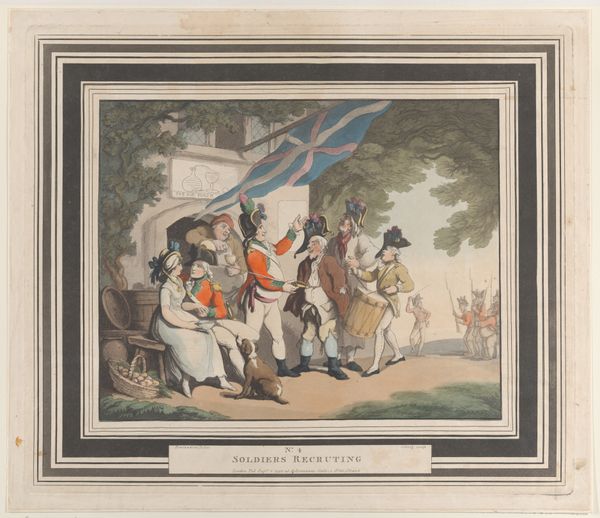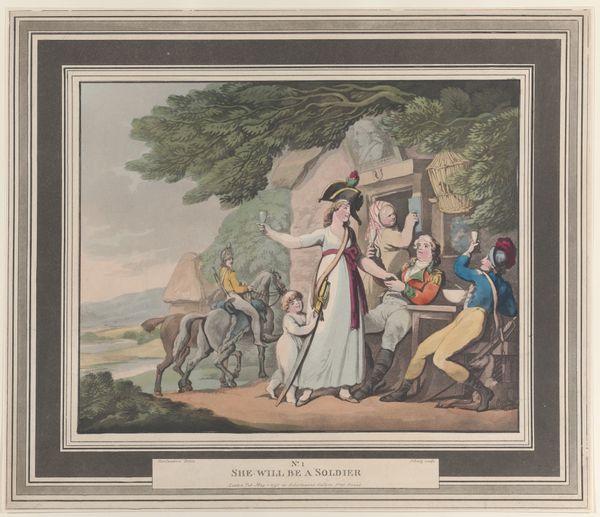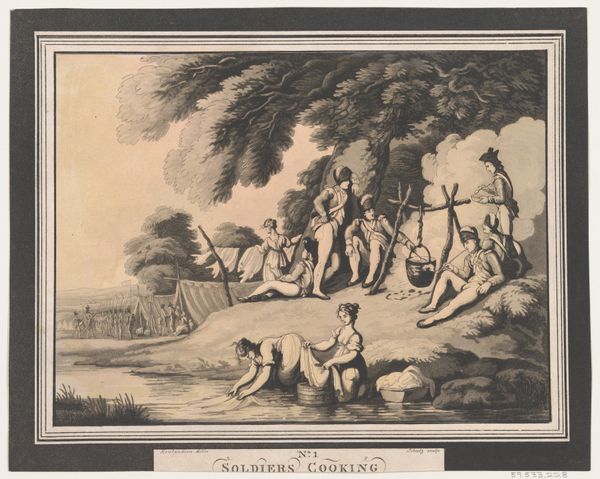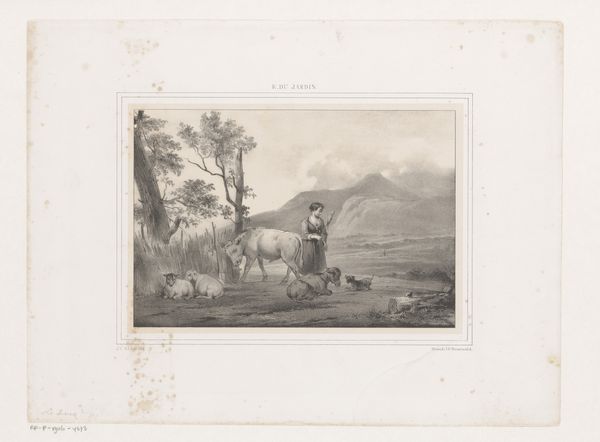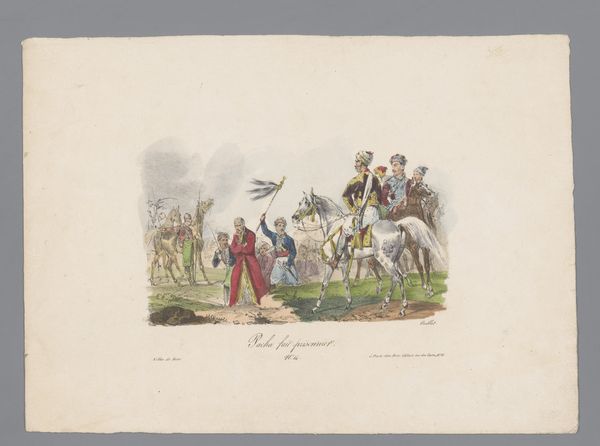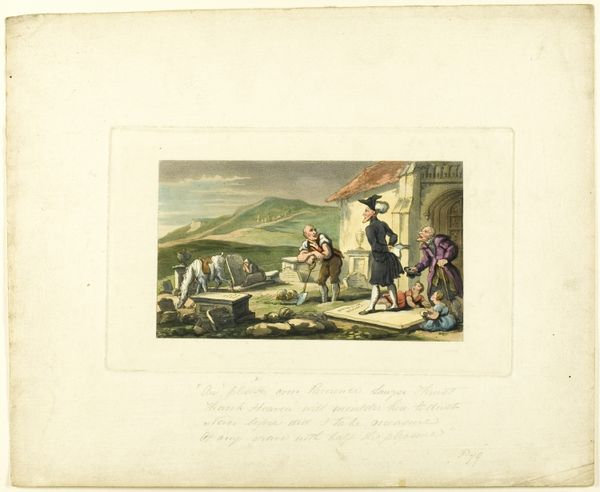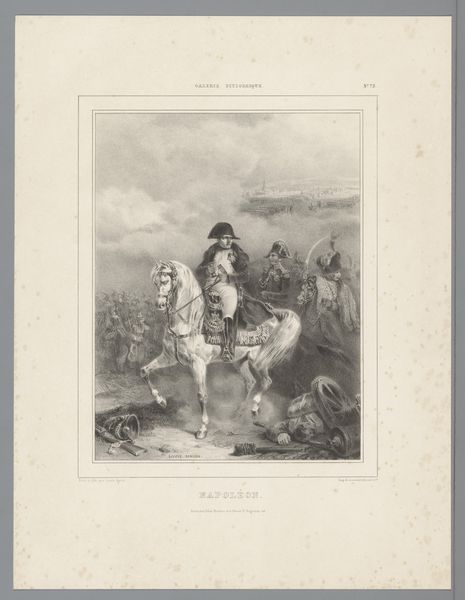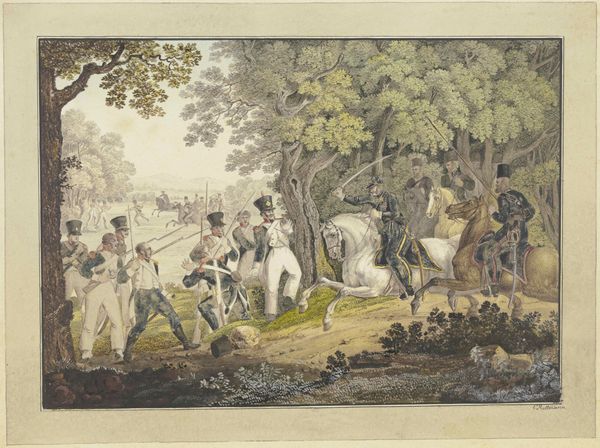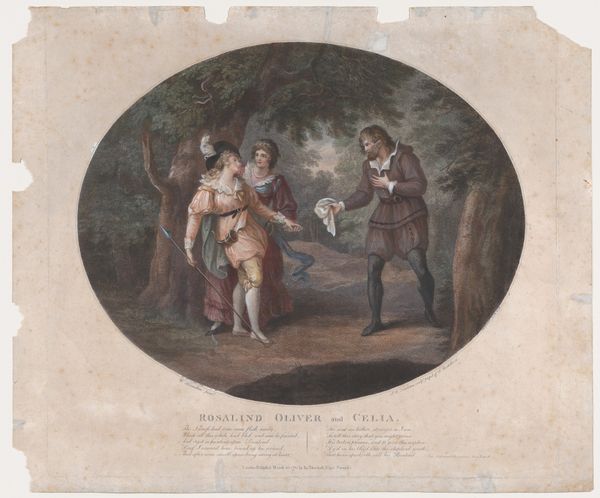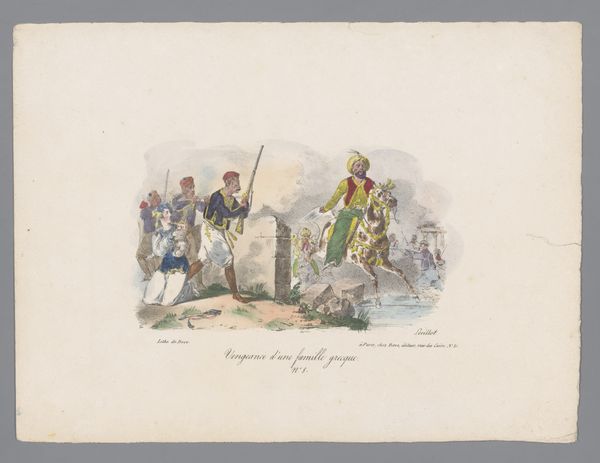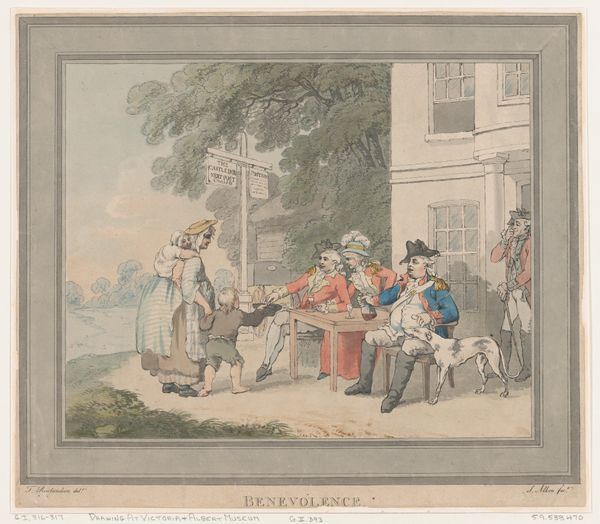
drawing, print
#
drawing
# print
#
landscape
#
romanticism
#
genre-painting
Dimensions: Sheet: 9 5/16 × 11 13/16 in. (23.7 × 30 cm)
Copyright: Public Domain
Curator: Heinrich Joseph Schütz created "Soldiers Recreating" as a print and drawing in 1798. It resides here at the Metropolitan Museum of Art. The artwork shows soldiers relaxing under a tree, but what do you make of it? Editor: Well, my immediate reaction is that this feels so staged, even sanitized. It’s not how one pictures a battlefield or encampment, that's for sure. Curator: Precisely! The image participates in the late eighteenth century obsession with genre paintings—it reflects a cultural yearning for an innocent, untroubled life. Think about the social and political turbulence of Europe at the time; revolution was in the air. It's no wonder people were drawn to this image of order and conviviality. Editor: Conviviality indeed. Notice the dancing figure, almost a classical muse with that draped gown, being serenaded by the music of her male admirers. She is invoking an idealized form, one deeply rooted in collective ideas of beauty and grace, removed from the grit of military life. What I see is an archetypal relationship between masculine admiration and feminine inspiration. Curator: That relationship is certainly deliberate. Remember, prints like this one were not just passively viewed; they were bought, traded, and circulated as propaganda. “Soldiers Recreating” isn't trying to show you war’s brutality. It promotes the benefits of military life and projects a romantic image of leisure and camaraderie as part of an aesthetic experience. Editor: But there is a quiet tension too. They seem aware of something. The background landscape fades off into infinity and the woman’s translucent gown creates movement like a ghost over the foregrounded forms of the soldiers, almost hinting that their idyllic repose may not last. Curator: That romantic aesthetic, its softness and grace, are always tinged with premonitions, as you suggest. What seems idyllic always implies something ominous hovering on the horizon. We shouldn’t forget how useful images of national strength could be, even in promoting national interest. Editor: This dance between visual symbols and historical realities gives such works a lasting potency, no? You walk away contemplating not only a historical slice-of-life, but an era’s deeply held beliefs about duty, beauty, and belonging. Curator: Yes, it’s a fascinating window into the aspirations of its time.
Comments
No comments
Be the first to comment and join the conversation on the ultimate creative platform.
